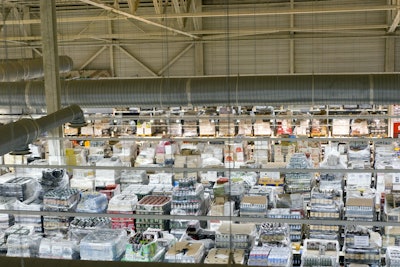
Order volumes across global supply chains have suffered the largest quarterly fall since the first lockdowns in early 2020, according to new data from Tradeshift.
“Resilience has become the No. 1 conversation in board rooms, but we need to stop thinking about supply chains as individual fiefdoms and start looking at each supply chain as part of a richer ecosystem,” says Christian Lanng, co-founder and CEO of Tradeshift. “Technology that connects buyers and suppliers more dynamically can help alleviate pressure that builds during volatility cycles. Areas where I see huge potential include digitized financing, which unlocks trapped working capital so that suppliers are incentivized to hold more inventory, and online marketplaces capable of intelligently pooling supply chain capacity and matching it to areas of high demand.”
From Tradeshift:
- The Q3 Index data shows cumulative order volume growth fell by 24 points globally compared to the previous quarter.
- Tradeshift’s data suggests that suppliers are struggling to fulfil a huge backlog of orders following a prolonged spike in demand as economies have re-opened. Global invoice volumes, which indicate how quickly suppliers are able to fulfil orders, climbed by a slower than expected 5 points and remain 31 points below the pre-pandemic forecast range.
- The Q3 Index data shows order volume growth fell by 40 points in the United States compared to the previous quarter.
- Tradeshift’s data suggests the current imbalance is beginning to slow the recovery that has been booming across key supply chain hubs. U.S. transaction volume growth dipped to 98, compared to a score of 108.5 in Q2. In China, the transaction index score fell to 96, a drop of 2 points compared to Q2. Activity across Eurozone supply chains rose a modest 0.5 points in Q3, but an index score of 82 suggests there is some way to go before activity normalizes against the pre-pandemic range.



















